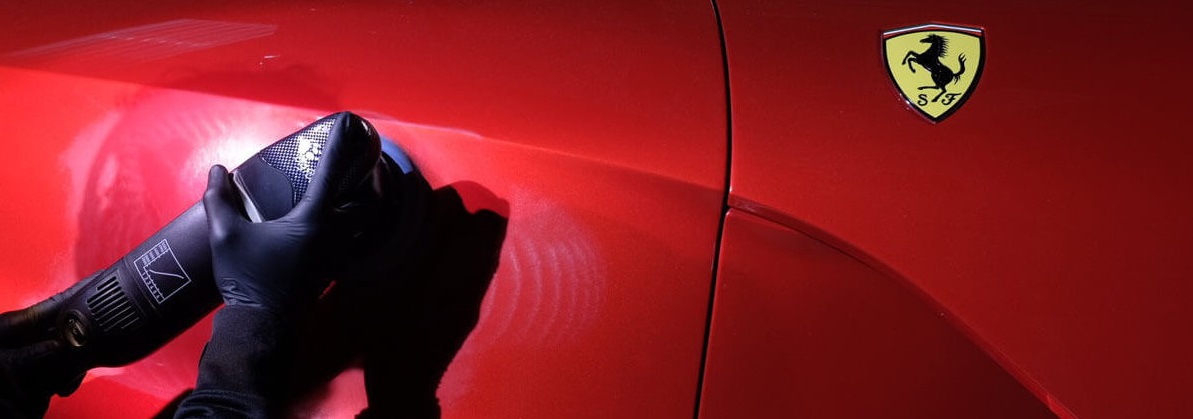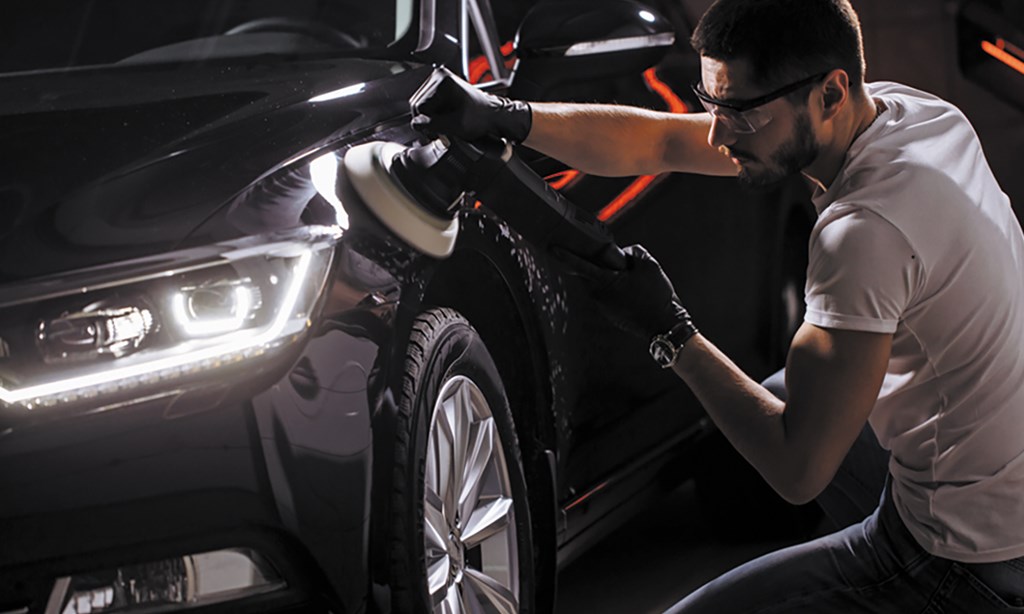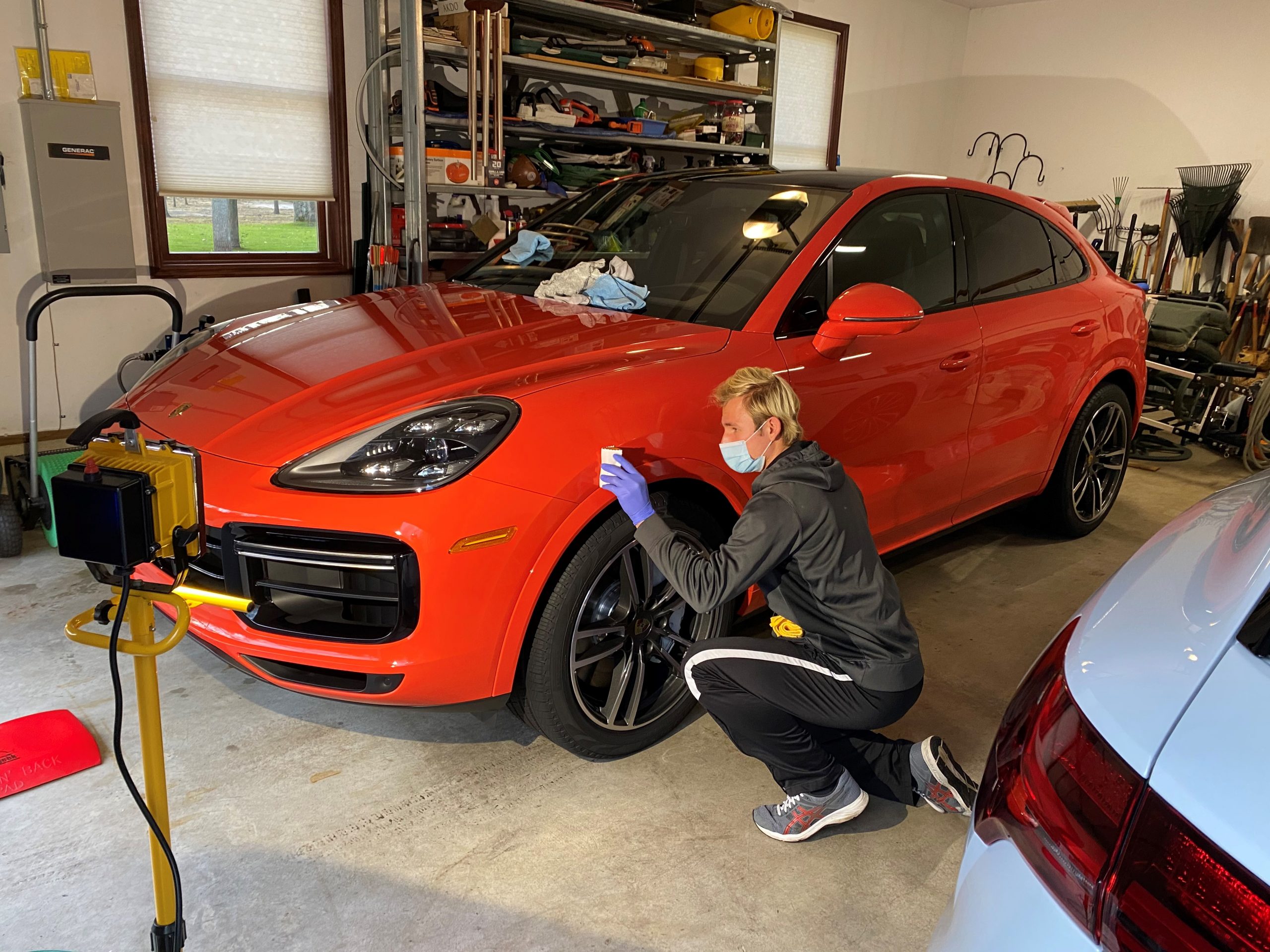Cost-Benefit Analysis: Is Ceramic Coating Worth the Investment?
In the ever-evolving landscape of automotive care, one term that has gained substantial traction is “ceramic coating.” As car enthusiasts and conscientious vehicle owners seek ways to protect and enhance the aesthetic appeal of their prized possessions, ceramic coating has emerged as a promising solution. But the pertinent question that echoes through the minds of potential users remains: Is ceramic coating truly worth the investment?
To embark on a journey of understanding the true essence of ceramic coating, it’s imperative to delve into its fundamental definition and composition. Ceramic coatings are liquid polymer applications that, when cured, form a protective layer on the surface of a vehicle. Comprising nanoparticles of silica and titanium dioxide, these coatings exhibit exceptional durability and resistance to various environmental elements.
The surge in the popularity of ceramic coatings within the automotive industry is not merely a passing trend; it reflects a paradigm shift in the way individuals approach vehicle maintenance. This shift is fueled by the desire for long-lasting protection and a heightened aesthetic allure. In this exploration of ceramic coating and its worthiness as an investment, we will navigate through the layers of its composition, the intricacies of its application process, and the tangible benefits it promises to deliver. Join us as we unravel the nuanced facets of ceramic coating and decipher whether this innovative solution is indeed a game-changer in t he realm of vehicle preservation.

Understanding Ceramic Coating
Understanding ceramic coating involves peeling back the layers of this innovative automotive protection solution to reveal its composition, application process, and the manifold benefits it bestows upon vehicles. At its core, ceramic coating is a liquid polymer that, when applied and cured, forms a durable and protective layer over a vehicle’s surface. This layer primarily consists of nanoparticles of silica and titanium dioxide, meticulously engineered to create a shield against environmental contaminants.
The application process of ceramic coating is a critical aspect that sets it apart from traditional protective measures like waxing. Typically applied by professional detailers, the process involves thorough surface preparation, ensuring that the vehicle’s paint is free from impurities and imperfections. Once applied, the coating undergoes a curing process, forming a robust bond with the vehicle’s surface.
Beyond its composition and application, the benefits of ceramic coating are extensive. From providing an additional layer of defense against harsh weather conditions, UV rays, and contaminants to enhancing the vehicle’s gloss and reducing the need for frequent waxing, ceramic coating offers a comprehensive approach to automotive preservation. As we navigate through the intricacies of ceramic coating, we will uncover the transformative potential this technology holds in elevating the longevity and aesthetic appeal of your cherished vehicle.
The Investment Aspect
Exploring the investment aspect of ceramic coating requires a nuanced examination of its initial costs, comparative value against traditional waxing methods, and the long-term benefits that contribute to its overall worth. Initially, the cost of applying ceramic coating to a vehicle may seem higher than conventional waxing. However, it’s essential to consider the broader perspective. Unlike wax, ceramic coatings offer extended durability, often lasting years instead of months. This longevity translates to fewer applications over time, potentially offsetting the higher initial expense.
Comparatively, traditional waxing, while initially more budget-friendly, necessitates frequent reapplication to maintain its protective properties. The cumulative costs of waxing, along with the time and effort invested in regular applications, might make ceramic coating a more economically viable choice in the long run.
Moreover, the investment in ceramic coating is not solely monetary. It represents a commitment to the sustained protection and enhancement of your vehicle’s appearance. As we delve deeper into the financial considerations, we’ll uncover the multifaceted aspects that contribute to the investment value of ceramic coating, elucidating whether the upfront expense aligns with the long-term benefits it promises to deliver.



Financial Benefits
The financial benefits of opting for ceramic coating extend beyond the initial investment, manifesting in a spectrum of advantages that can positively impact your wallet in the long run. One notable advantage is the reduction in the need for regular waxing. Unlike traditional wax, which requires periodic reapplication, ceramic coatings offer a durable shield against environmental contaminants and UV rays, diminishing the frequency of maintenance. This translates to potential savings in both time and expenses associated with purchasing and applying wax regularly.
Furthermore, ceramic coatings act as a robust defense mechanism against environmental elements. The protective layer helps prevent damage from bird droppings, tree sap, and other contaminants that can degrade a vehicle’s paint over time. By mitigating these risks, ceramic coatings contribute to potential savings on repairs and maintenance, as the need for extensive paint correction or detailing services may be minimized.
In essence, the financial benefits of ceramic coating go beyond the surface, offering a comprehensive approach to vehicle preservation. As we navigate through the layers of economic advantages, we’ll uncover the tangible savings and efficiencies that make ceramic coating a compelling investment for those seeking both financial prudence and long-term protection for their vehicles.
Non-Financial Considerations
Beyond the realm of financial considerations, the decision to invest in ceramic coating involves a thoughtful exploration of non-monetary factors that contribute to the overall value proposition. One such consideration is the aesthetic improvement bestowed upon the vehicle. Ceramic coatings enhance the paint’s depth and clarity, providing a glossy finish that not only protects but also elevates the visual appeal of the vehicle. This aesthetic enhancement contributes to the pride of ownership and can positively impact the resale value.
Additionally, the time and effort savings in cleaning are noteworthy non-financial benefits of ceramic coating. The hydrophobic properties of the coating make it more challenging for dirt and grime to adhere to the surface, simplifying the cleaning process and reducing the frequency of thorough washes. This time-saving aspect resonates with individuals seeking a convenient and efficient way to maintain the pristine appearance of their vehicles.
Environmental impact is another non-financial consideration. Ceramic coatings often require fewer resources and products for maintenance compared to traditional waxing. The reduction in the consumption of cleaning agents and water, coupled with the longer intervals between applications, aligns with environmentally conscious practices.

Real-world Experiences
Real-world experiences with ceramic coating provide valuable insights into the practical benefits and drawbacks of this automotive protection solution. Many users attest to the transformative impact on their vehicles, emphasizing the enhanced gloss, color depth, and overall aesthetic improvement. These firsthand accounts often highlight the ease of maintenance, with reduced effort required for cleaning and a noticeable resistance to environmental contaminants.
Expert opinions and reviews further enrich the tapestry of real-world experiences. Automotive detailing professionals often share success stories of restoring and preserving vehicles through ceramic coatings. These experts emphasize the durable protection against scratches, oxidation, and fading, underscoring the long-term value ceramic coatings bring to a vehicle.
However, it’s crucial to acknowledge a spectrum of experiences. Some users may express concerns about the application process or the need for meticulous surface preparation. Addressing these nuances provides a more comprehensive understanding of the real-world dynamics of ceramic coating.
Potential Drawbacks
While ceramic coating presents a compelling array of benefits, it is essential to consider potential drawbacks that users may encounter in their quest for enhanced vehicle protection. One notable consideration is the risk of misapplication. Achieving the optimal results with ceramic coating demands meticulous surface preparation and precise application, and deviations from these guidelines can lead to suboptimal performance.
It’s important to note that while ceramic coatings offer robust protection against a range of contaminants, they may have limitations when it comes to major damages. Deep scratches or rock chips may still impact the vehicle’s paint, and users should be aware that ceramic coatings do not provide an impenetrable shield against all forms of physical damage.
Additionally, environmental concerns have been raised in relation to ceramic coatings. Some formulations may contain chemical components that, if not disposed of properly, could contribute to environmental degradation. Users are encouraged to be mindful of product composition and adhere to eco-friendly application and disposal practices.
FAQs
Unlike traditional wax, ceramic coating provides a longer-lasting protective layer. It bonds chemically with the vehicle’s surface, offering enhanced durability and reducing the need for frequent reapplication.
Ceramic coating provides several benefits, including increased protection against UV rays, environmental contaminants, and oxidation. It also enhances the vehicle’s gloss, makes cleaning easier, and can contribute to the vehicle’s resale value.
While ceramic coatings offer protection against minor scratches, they may not prevent deep scratches or rock chips. The coating acts as a sacrificial layer, absorbing some impacts but not all.
The curing time for ceramic coating varies by product. It’s advisable to wait at least 24 to 48 hours before washing the vehicle to allow the coating to fully cure and bond to the surface.
No, ceramic coating does not make a vehicle scratch-proof. It provides an additional layer of protection, but it may not prevent all types of scratches.
Conclusion
In conclusion, the decision to invest in ceramic coating for your vehicle involves a careful weighing of both financial and non-financial considerations. The allure of a glossy finish, prolonged protection, and reduced cleaning efforts make ceramic coating an enticing prospect for automotive enthusiasts. Real-world experiences underscore the transformative impact it can have on a vehicle’s aesthetics and longevity, as echoed by both users and detailing experts.
However, it’s crucial to approach ceramic coating with a realistic understanding of potential drawbacks, such as the importance of precise application and the limitations in protecting against major physical damages. Environmental considerations also underscore the importance of responsible usage and disposal.
As you contemplate whether ceramic coating is the right choice for your vehicle, consider seeking professional advice and services. The Last Detail Mobile, with its expertise in automotive detailing, stands ready to guide you through the intricacies of ceramic coating application, ensuring that you make an informed decision aligned with your vehicle preservation goals. The journey of enhancing and protecting your vehicle awaits, and with The Last Detail Mobile, it can be a seamless and rewarding experience.
Leave a Reply